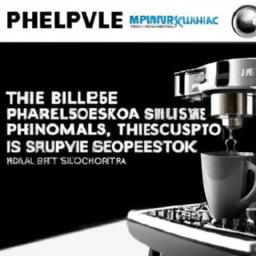Choosing the perfect espresso machine can feel like standing in front of a candy store. So many options. So many shiny buttons. Two big names often come up: DeLonghi and Breville.
Why do these two get all the buzz? Is one better at making your morning cup of magic? Or are they just two brands with fancy looking machines?
At How To Cook Gourmet, we took a closer look. We compared what makes each machine tick, so you don’t have to. Curious about which one fits your kitchen, budget, and caffeine needs? Stick around. We have some espresso insights for you.
The Real Deal on Espresso Quality and Taste
Quality and taste are king when it comes to espresso. So, what makes one shot better than another? It’s not just the beans or your barista skills. The machine plays a huge role.
We often think of espresso machines as simple gadgets that push hot water through coffee grounds. But it’s more like a high-stakes science experiment, where temperature, pressure, and grind size all have to get along.
Here’s what really affects espresso quality:
- Pressure Consistency: Too little pressure, and you get weak coffee. Too much, and it’s bitter. The sweet spot? Around 9 bars.
- Temperature Stability: Hot water is a must but not too hot. If the machine can keep its temp steady, your espresso will taste amazing every time.
- Grind and Dose: Even the best machine struggles if your coffee grind is off. Is it too fine or too coarse? How much coffee goes into the portafilter?
- Extraction Time: A shot that pulls too fast or too slow will mess up the flavors.
| Factor | Ideal Range | Impact on Taste |
|---|---|---|
| Pressure | 9 bars | Balanced bitterness and strength |
| Temperature | 195-205°F (90-96°C) | Proper extraction without burnt notes |
| Extraction Time | 25-30 seconds | Even flavor profile |
Why does this matter to us? Because no matter how fancy a machine is, it needs to maintain these standards for great espresso. Some brands promise the world but fall short on these basics. Which one do you think can nail these consistently?
When it comes to brewing espresso, Breville and DeLonghi don’t just press buttons and hope for the best. They both use clever tech that makes your coffee taste just right. Breville favors precise temperature control and includes a built-in conical burr grinder, giving you fresh grinds with every shot. DeLonghi, on the other hand, often uses a patented cappuccino system that mixes steam, air, and milk to create froth that could make a foodie smile.
| Feature | Breville | DeLonghi |
|---|---|---|
| Grinder | Built-in conical burr grinder | External or no grinder on some models |
| Milk Frothing | Manual steam wand | Automatic cappuccino system |
| Temperature Control | PID precise system | Standard thermostat control |
| Ease of Use | More control, some learning curve | Straightforward, beginner-friendly |
So why should we care about these features? Because the quality of your espresso depends on them. Get the temperature or grind wrong, and your espresso might taste bitter or weak. These machines try hard to get it perfect for you.
Why Design and Size Matter in Your Kitchen
Size matters. Especially in the kitchen. Pick an espresso machine that fits your space well. Too big? It’ll crowd your counter and your mojo. Too small? You might lose out on some powerful features.
Design is more than just looks. It can change how easy the machine is to use and clean. Are those buttons easy to press when you’re half awake? Can you access the water tank without disassembling half the unit?
- Counter Space: Measure your kitchen spot before you pick.
- Ease of Use: Think about how the design affects daily brewing.
- Cleaning: Will you dread cleaning or will it be simple enough to keep you consistent?
| Feature | DeLonghi | Breville |
|---|---|---|
| Size | Compact & sturdy | Larger but sleek |
| Design Focus | User-friendly | Professional-style industrial with brushed stainless steel finishes |
| Counter Fit | Perfect for smaller spaces | Better for spacious kitchens |
Have you figured out how much elbow room you want around your machine? Remember, a cramped space can turn your coffee moment into a mini wrestling match. We say, let your espresso machine fit snugly and gracefully like it was meant to be there.
Control Freaks Rejoice How Customization Stacks Up
If you like to control every little detail of your espresso, you probably want to know which machine lets you boss around the brew better. Both brands offer options to tweak your cup just right, but who really wins the customization showdown?
DeLonghi machines often provide a solid range of settings. You can usually adjust grind size, temperature, and shot volume. But Breville tends to take it further with digital displays and programmable buttons. This means you can save your favorite recipes, a handy feature when you like repeating perfection.
| Feature | DeLonghi | Breville |
|---|---|---|
| Grind Size Control | Manual, 5 settings | Digital, 30+ settings |
| Temperature Adjustments | Basic dial | Precise digital control with PID temperature regulation |
| Shot Volume | Standard buttons | Customizable presets with memory settings |
| Memory Settings | No | Yes |
Are you the type to experiment with flavor every morning? Breville allows you to store multiple recipes, which means you can switch from a strong morning espresso to a lighter afternoon latte with ease. DeLonghi machines are simpler, so if you prefer less fuss, it suits you.
Weighing the pros and cons, it looks like Breville caters more to the control freak in us. But DeLonghi remains a reliable choice if you want good espresso without extra buttons and beeping sounds.
Speed vs. Patience Which Machine Works Faster
When it comes to making espresso, speed matters. But can rushing everything make your coffee taste better? We think not. The debate between quick results and slow, careful brewing is real. Both DeLonghi and Breville have their fans on this.
DeLonghi machines often focus on getting your espresso ready fast. If you need your caffeine kick in a flash, these machines won’t let you down. They are like the sprinters of the coffee world-fast off the mark and strong through the finish.
Breville, on the other hand, asks us to slow down a bit. With its precise temperature control and programmable options, it encourages patience. Is waiting a bit longer for a richer flavor worth it? We think yes. It’s like cooking a slow roast compared to microwaving your dinner.
| Feature | DeLonghi | Breville |
|---|---|---|
| Average brew time | 30-45 seconds | 60-90 seconds |
| User control | Simple, quick | Advanced, detailed |
| Flavor profile | Good, consistent | Rich, complex, with finely-tuned grinding and steam wands for milk frothing |
So what do you want? Quick caffeine or a coffee experience that makes you savor every sip? Speed can be exciting but patience often rewards us with layers of flavor.
At How To Cook Gourmet, we believe both styles have a place. Some days call for a fast espresso. Other days, we let the machine take its time and enjoy the process. Do you want to be the sprinter or the slow runner in your coffee game?
Cleaning Made Simple or Complicated Troubles
Cleaning your espresso machine sounds simple, right? Well, some models treat us to a game of hide and seek with all their tiny parts. Do you enjoy scavenger hunts in your kitchen? Some people might, but we prefer quick and easy.
Breville machines usually offer easy access to the brew group – the part that gets the dirtiest – which you can remove for a quick rinse. They come with clear cleaning instructions, manual but straightforward routines, and some models include alerts and notifications. DeLonghi models sometimes have removable brew groups too, but a few require more fiddling. DeLonghi can also be a bit more fiddly with descaling and filter scrubbing, demanding more attention to cleaning details.
| Feature | Breville | DeLonghi |
|---|---|---|
| Removable Brew Group | Yes | Mostly yes, some no |
| Auto-Clean Programs | Basic | More advanced, especially for milk frothing |
| Water Filter Replacement Ease | Simple | Simple |
| Milk Frother Cleaning | Manual wipe | Some models have auto-clean |
If you enjoy hands-on cleaning, Breville might be your buddy. If you prefer gadget help with cleaning, DeLonghi may save you some hassle. Both brands use water filters to reduce scale buildup, and replacing them is generally easy – setting a reminder helps keep taste and machine health optimal.
- Rinse out the basket after each use
- Wipe the steam wand after frothing milk
- Run the descaling cycle when prompted
- Check and clean the drip tray weekly
Cleaning doesn’t have to be a horror story, but which brand feels more like a fairy tale? Your counter knows the answer better than you.
Money Talk Which One Saves or Spends Your Bucks
Choosing between DeLonghi and Breville is like asking, “Which superhero saves more of our money?” Both have their wallet-friendly and spendier sides.
DeLonghi machines usually come with a friendlier price tag and offer solid performance without making your budget cry.
Breville machines might be a bit pricier but come with features that feel like having a barista at your fingertips. They also use higher build quality materials like brushed stainless steel, which can save money in the long term through durability and fewer repairs.
| Brand | Average Price | Main Money Saver | Potential Extra Costs |
|---|---|---|---|
| DeLonghi | $400 – $900 | Affordable parts and simple fixes | Basic features might need add-ons |
| Breville | $600 – $1,200 | Durability and fewer repairs thanks to premium materials | Higher upfront investment |
Think about your coffee habits. Does a smaller budget mean more than extra features? Or is investing in high-end tech your style? We keep it simple: pick what makes your wallet smile and your mornings brighter.
Warranty and Support What Happens When Things Break
Things break. Even espresso machines. So what happens when your DeLonghi or Breville stops frothing or starts acting like it’s got a cold? That’s when warranties and support save the day.
Both brands offer solid warranties, but they don’t cover everything. Usually, you get about a year of coverage. That means if your machine just stops working without a coffee-related incident, you might be in luck.
| Brand | Warranty Length | What’s Covered | What’s Not Covered |
|---|---|---|---|
| DeLonghi | 1 year | Parts and labor for defects | Accidental damage, misuse |
| Breville | 1 – 2 years | Parts and labor for manufacturing defects | Wear and tear, user damage |
It’s worth noting that DeLonghi often offers a two-year limited warranty on many models, which gives it a slight edge over Breville’s standard one-year limited warranty. When it comes to customer support, Breville provides excellent online guides, tutorials, and responsive weekday support via phone, email, and live chat, making troubleshooting easier. DeLonghi shines with readily accessible phone support and well-rated service centers, helping you get repairs done quickly and efficiently.
- DeLonghi’s website has a handy FAQ section
- Breville offers video tutorials that even our pet could follow plus thorough weekday support via phone, email, and live chat
- Both provide options for sending in machines for repairs
What if your machine is out of warranty? Then it’s time to decide. Do you repair or replace? Repairs can be pricey, especially if parts are rare or complicated. Sometimes, your wallet decides better than you.
Which One Should We Choose for Our Perfect Cup
Choosing between DeLonghi and Breville for that perfect cup is like picking your favorite superhero. Both bring power, but differently. Are you after a sleek kitchen gadget or a robust barista beast?
Let’s break down what matters most when brewing espresso at home.
- Ease of Use: Do you want a machine that’s smart enough to take the lead or one where you call all the shots?
- Customization: How much control do you want over grind size, temperature, and milk froth?
- Design: Does your espresso maker need to wow your guests or just serve silently?
- Price: Ready to splurge or looking for solid value?
| Feature | DeLonghi | Breville |
|---|---|---|
| User Friendliness | Simple buttons, quick setup | Touch screens, more settings, tactile physical buttons and dials reminiscent of classic espresso machines |
| Customization | Basic options | Advanced tweaking, extensive brew parameter control |
| Design Style | Classic, compact | Industrial and sleek with brushed stainless steel finishes |
| Price Range | Budget-friendly | Mid to high-end |
Think about the coffee you want every morning. Are you aiming for ease or expert Espresso? Sometimes, the right pick feels less like a kitchen choice and more like a lifestyle decision.
Bonus Insights: Design, Extraction, and Frothing
Choosing an espresso machine can feel like picking your favorite superhero. Do you go for the sleek and stylish Breville or the trusty and classic DeLonghi? Both brands promise a great cup of coffee, but which one really fits your morning vibe?
Breville machines often scream sleek and modern, like they belong in a tech lover’s kitchen. Meanwhile, DeLonghi keeps it classic with a bit of Italian charm, which makes you want to enjoy your espresso on a sunlit café terrace.
Breville tends to offer more buttons and dials, tempting you to customize every shot. DeLonghi prefers simpler controls, which can be great if you just want coffee fast, without an instruction manual’s weight.
| Feature | Breville | DeLonghi |
|---|---|---|
| Look | Ultra modern, stainless steel | Classic with retro hints |
| Size | Often bigger, more countertop space | Compact and neat |
| User Interface | Touchscreen and knobs | Simple buttons and knobs |
| Extra Features | Integrated grinders and timers | Easy frothing and quick start |
When it comes to espresso extraction, Breville machines usually come with a precise pump system. They maintain a steady pressure, usually 15 bars, to push water through the coffee. This gives the espresso a nice, rich crema and balanced flavor. The water temperature is controlled carefully too, hitting that sweet spot every time.
DeLonghi tends to focus more on a traditional, easy-going extraction. The pressure might be a bit lower, making the shot less intense but smoother. It’s like a gentle hug for your taste buds. DeLonghi machines often have adjustable steam wands, good for frothing milk, which affects the overall aroma and mouthfeel.
| Feature | Breville | DeLonghi |
|---|---|---|
| Pressure (Bars) | 15 (Stable) | 9-15 (Varies) |
| Water Temperature | Precise, around 200°F | Good control, slightly cooler |
| Crema Quality | Thick and rich | Mild, soft |
| Milk Frothing | Powerful steam wand | Adjustable steam wand |
| Flavor Profile | Bold and balanced | Mild and smooth |
For milk frothing enthusiasts, Breville’s steam wand is known for powerful steam pressure and precise control, delivering dense foam quickly, though it takes a bit of skill to avoid hot spots in the milk.
DeLonghi offers a more user-friendly, moderate steam wand producing silky, smooth foam that’s beginner-friendly and less intimidating.
| Feature | Breville | DeLonghi |
|---|---|---|
| Steam Power | Strong and fast | Moderate and steady |
| Ease of Use | Tech skill needed | Beginner-friendly |
| Froth Quality | Dense foam possible | Silky, smooth foam |
| Cleaning | Quick but requires care | Simple and fuss-free |
Consider how hands-on you want to be with your coffee making – Breville offers customizable, techy features and a sleek design perfect for those who love to tinker, while DeLonghi delivers a compact, classic machine friendly to beginners and those seeking quick espresso without fuss.
You’ve Got Questions, We’ve Got Answers
Q&A: DeLonghi vs Breville Espresso Machines
Q: Which brand makes the best espresso machine for beginners?
A: Both DeLonghi and Breville offer beginner-friendly models. DeLonghi is often simpler, great if you want to push a button and get coffee fast. Breville, on the other hand, gives more control, which can be fun if you like tweaking your shots. Do you want easy or lots of control?
Q: Are these machines expensive?
A: They can be. DeLonghi usually has options that cost less, perfect if you want espresso without breaking the bank. Breville machines tend to be pricier but include extra features and premium materials. How much are you willing to spend on your caffeine fix?
Q: How do the sizes compare?
A: DeLonghi machines are often compact, fitting easily on smaller kitchen counters. Breville machines may take up more space but come with larger water tanks and grinders. Is your counter ready for a big machine or a cozy fit?
Q: Which machine is easier to clean?
A: DeLonghi tends to have fewer parts to clean, which is great if you’re not big on maintenance. Breville models offer straightforward manual cleaning but require a bit more effort and include cleaning alerts. Would you rather spend time sipping or scrubbing?
Q: Can these machines make frothy milk for lattes?
A: Yes. Both brands include steam wands or frothers. DeLonghi’s often do the trick but may need more skill. Breville’s steam wands are known for creating microfoam, perfect for latte art. Dreaming of foam hearts on your coffee?
Q: What about durability?
A: Both brands build machines to last, but Breville uses more metal parts like brushed stainless steel, which might add sturdiness. DeLonghi relies more on plastic but still delivers solid performance. Would you trust your espresso fate to metal or plastic?
Q: Are replacement parts easy to find?
A: Yes to both. DeLonghi has a wide network for parts and repairs. Breville parts are also easy to find, plus lots of user forums with DIY tips. Are you a fix-it-yourself type or a call-the-expert kind of person?
Q: What makes their designs stand out?
A: Breville machines flaunt sleek, modern designs with brushed stainless steel and smooth lines, giving a futuristic but friendly kitchen vibe. DeLonghi embraces classic styles with warm colors and retro shapes that feel cozy yet stylish. Both make your countertop pop, just in different ways.
Q: How about maintenance costs over time?
A: Breville’s parts can be pricier and require attentive maintenance, but their solid metal build usually means they last longer. DeLonghi tends to be cheaper upfront and easier to repair with widely available parts. Balance your budget between upfront price and potential repair costs.
Q: What about the milk frothing experience?
A: Breville offers rich, creamy microfoam with adjustable steam pressure, ideal for foam enthusiasts who love mastering texture. DeLonghi provides simpler steam wands or automatic frothing systems, great for quick, fuss-free froth without the steep learning curve.
Q: Which brand scores better on durability and cleanup?
A: Breville’s stainless steel bodies handle kitchen hustle well and feature removable dishwasher-safe parts for faster cleaning. DeLonghi machines combine plastic and metal, making them lighter but sometimes needing more hand-washing and care.
Q: How do the flavor profiles of espresso compare?
A: Breville tends to produce espresso with bold, balanced bitterness, noticeable caramel sweetness, bright acidity, and a full creamy body with a satisfying aftertaste. DeLonghi’s shots are often smoother and milder, with less pronounced bitterness, softer acidity, and a lighter body.
Q: What tech features give these machines an edge?
A: Breville’s PID temperature control, adjustable grind settings (up to 45 levels), and customizable pre-infusion give baristas in the making precise command over their espresso. DeLonghi offers simpler grind controls (around 10 settings) and fixed pre-infusion, focusing on straightforward usability over tech complexity.
Q: Which one friendlier to beginners?
A: DeLonghi shines with its easy controls, button-heavy layouts, and fast startup, perfect for those who want quick, no-fuss coffee. Breville appeals to coffee lovers who don’t mind a learning curve for detailed customization and tech features.
Q: How do their warranties and support compare?
A: DeLonghi often provides a two-year limited warranty on many models and has well-rated service centers. Breville usually offers a one to two-year warranty along with extensive online tutorials and live customer support. Both make it fairly easy to get help when needed.
Q: What’s the price difference really about?
A: Breville machines come at a higher price, reflecting premium build, tech features, and durability. DeLonghi models are often more budget-friendly upfront but might lack some advanced customization features. Consider your long-term coffee habits and budget.
Q: Can you summarize these differences at a glance?
| Feature | Breville | DeLonghi |
|——————-|——————————–|——————————-|
| Material | Brushed stainless steel | Metal & plastic blend |
| Design Style | Modern & minimal | Classic & vintage flair |
| Price Range | Mid to high | Low to mid |
| Ease of Use | Moderate to advanced (digital screens and knobs) | Simple buttons and dials |
| Customization | High (programs, grind, temp) | Moderate (basic buttons) |
| Milk Frothing | Manual steam wand (rich microfoam) | Automatic/manual options |
| Durability | High (metal-heavy, robust) | Medium (lighter materials) |
| Cleaning | Removable dishwasher-safe parts | More hand-washing, fiddly parts |
| Warranty | 1-2 years | Often 2 years |
| Parts Availability| Limited & pricier | Wider network, more affordable |
So, what matters more for your coffee fix? Convenience or hands-on control? We believe both offer great options but knowing your style helps. When we cook gourmet, the right tools make all the difference. Why should your coffee gear be any different?
The Way Forward
Choosing between DeLonghi and Breville is like picking your favorite superhero. Both have their powers. DeLonghi might charm you with ease and style, while Breville pushes the limits with features and control.
Which one suits your coffee rhythm? Do you want simplicity or more options to tinker with? Think about how you like your coffee moments.
At How To Cook Gourmet, we see both as strong contenders. Whichever you choose, your espresso game is about to level up. Now, the real question is-are you ready to become your own barista?




